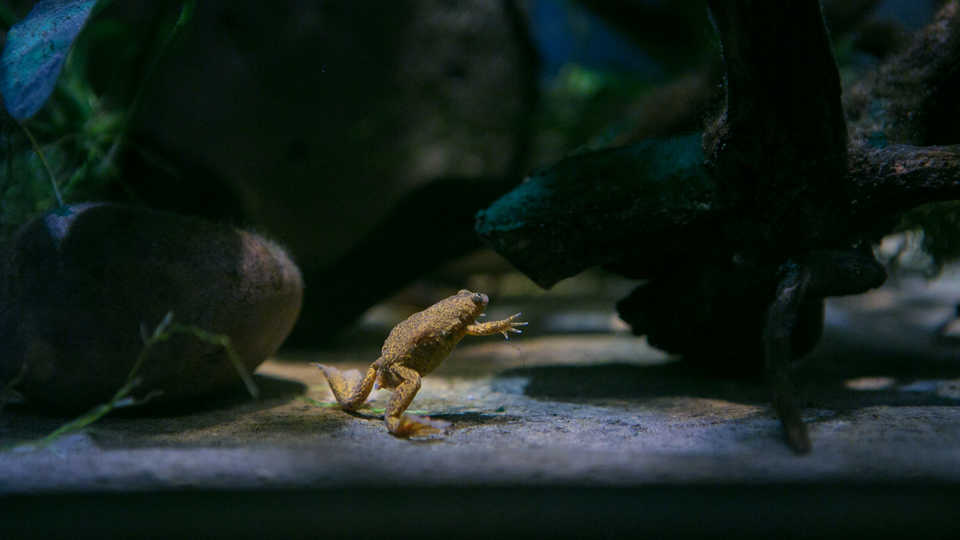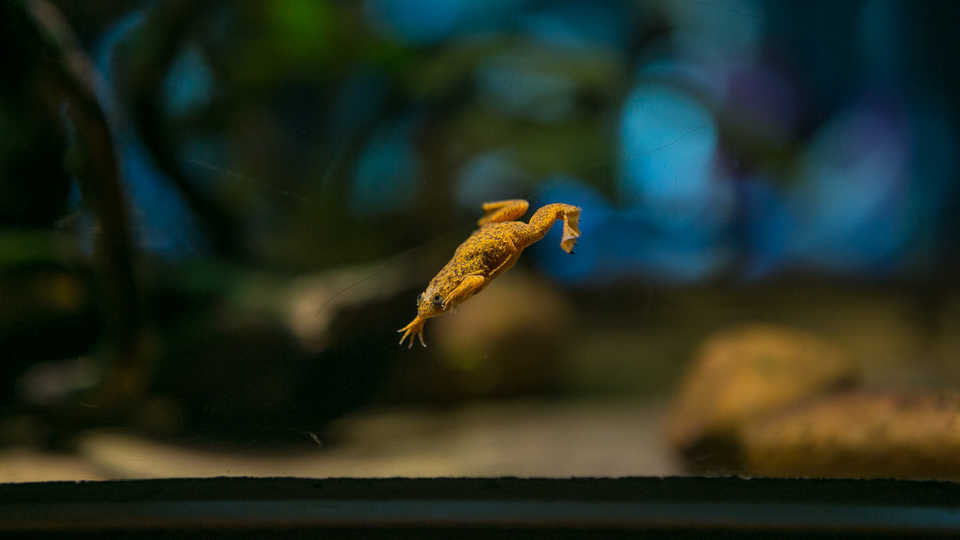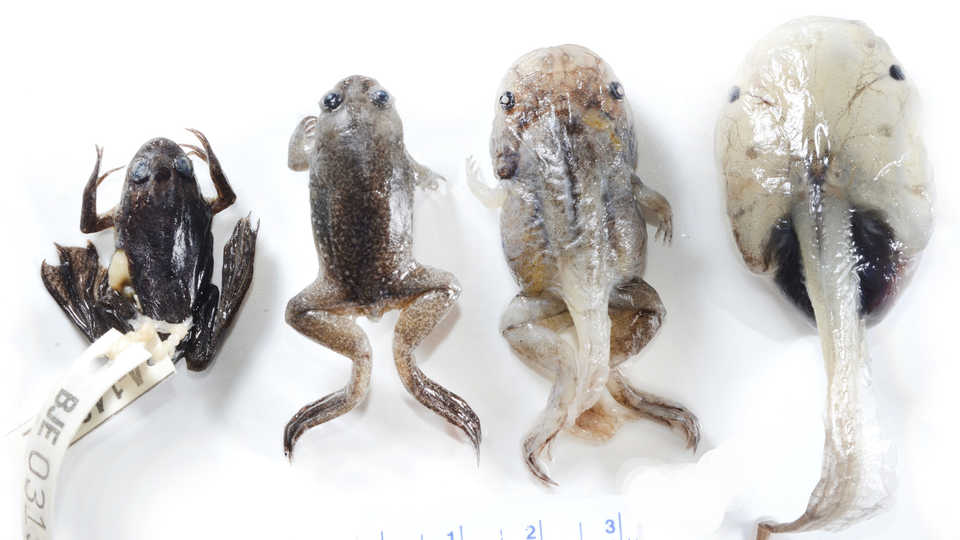The Academy's conservation reeding programs help contribute to Species Survival Plans and critical conservation efforts all over the world.
Breeding Programs
Lake Oku Clawed Frogs
Please note: This species is no longer part of the Academy's conservation breeding program.
Scientific name: Xenopus longipes
Range: Found in Lake Oku, a crater lake at the top of the volcanic Mount Oku in the Northwest region of Cameroon
Status: Critically endangered
Academy Research Associate David Blackburn has been traveling to Cameroon for more than ten years, but until recently, had only scratched the surface of what there is to know about Xenopus longipes, a largely unstudied amphibian that lives only in a remote crater lake atop the volcanic Mt. Oku. These frogs' extremely limited geographic range makes them unique, along with the fact that they’re small, spend most of their time underwater, and are slow-moving. They’re also dodecaploid, meaning they have 12 copies of their chromosomes. (Humans have two.) Blackburn has been working with a team in Cameroon to ensure the survival of the Lake Oku clawed frogs in the face of increased land use around their limited habitat. As part of the Academy’s new initiative to focus on amphibian conservation and biodiversity education, Blackburn and a team of biologists traveled to Cameroon to study and collect amphibians found there, including X. longipes.
On Top of Mount Oku
On their most recent expedition to Cameroon, Academy biologists documented nearly 80 amphibian species, including several that are likely new to science. There’s a reason why Blackburn has been doing research there for so long—Cameroon is a hotbed of amphibian life, a place where their diversity and evolutionary history can be studied up close. Nearly a third of the world’s amphibians are at risk of extinction, however, and the Lake Oku clawed frog’s situation is particularly precarious. Over the past decade, Blackburn has observed increased evidence of two of the most serious threats to the to the health of amphibian populations: deforestation and the spread of the deadly chytrid fungus. Increased tourism infrastructure is also threatening the relatively small Lake Oku. When Blackburn first started visiting the site, it was far from any human activity. Now, a new paved road and rental cabins make it an attractive tourist destination. Added human activity will likely introduce new threats, including pollution and the possibility of non-native fish species, which could potentially spell a very quick demise for these frogs. Figuring out a strategy to protect the frogs is now more time-sensitive than ever.
Planning for the Future
Also time-sensitive was the tricky task of transporting X. longipes specimens all the way back to San Francisco. After bagging the frogs, it was imperative that Blackburn’s team keep them cool on the long journey from the highlands of northwestern Cameroon to its considerably hotter center—not to mention the transcontinental flight required to get them to the Academy. Once they arrived safely, Blackburn began work with Steinhart Aquarium biologists to study the development, reproduction, diet, and husbandry of the species. Before they began this in-depth study, the life cycle of the frogs was largely a mystery. Having full access to the frogs for the first time opened up a world of questions: Where did they lay eggs? What water conditions were best suited to tadpoles? Recreating the ideal environment for these sensitive frogs is a challenge, but answering these questions and successfully completing the life cycle will hopefully be the first step in understanding how to protect this endangered amphibian.


